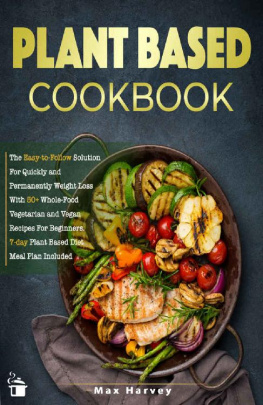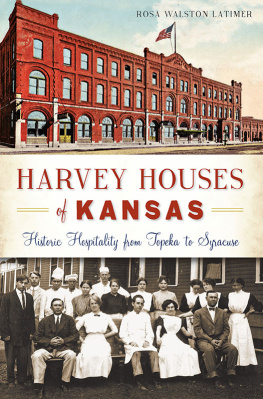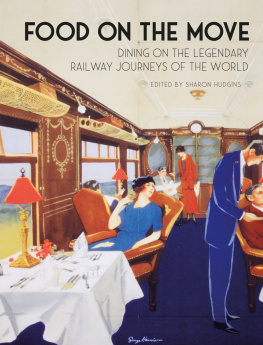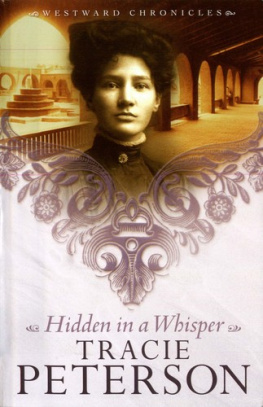The Harvey House Cookbook
The Harvey House Cookbook
Memories of Dining Along the Santa Fe
Railroad
George H. Foster and Peter C. Weiglin

Copyright 1992 by George H. Foster and Peter C. Weiglin
First Taylor Trade Publishing edition 2006
Originally published in 1992 by Longstreet Press, Inc.
This Taylor Trade Publishing paperback edition of The Harvey House Cookbook is an original publication. It is published by arrangement with the author.
All rights reserved. No part of this book may be reproduced in any form or by any electronic or mechanical means, including information storage and retrieval systems, without written permission from the publisher, except by a reviewer who may quote passages in a review.
Published by Taylor Trade Publishing
An imprint of The Rowman & Littlefield Publishing Group, Inc.
4501 Forbes Boulevard, Suite 200, Lanham, Maryland 20706
Distributed by NATIONAL BOOK NETWORK
The Longstreet Press edition of this book was previously catalogued by the Library of Congress as follows:
The Harvey House cookbook : memories of dining along the Santa Fe Railroad / by George H. Foster and Peter C. Weiglin.
p. cm.
Includes index.
1. Harvey, Fred. 2. Fred Harvey (Firm)History. 3. Atchison, Topeka, and Santa Fe Railroad Company. 4. Cookery, American. 5. Railroad stationsFood serviceUnited States. I. Title
TX715.F74 1992
641.5973dc20 91-77187
ISBN-13: 978-1-58979-321-7 (alk. paper)
ISBN-10: 1-58979-321-8 (alk. paper)
 The paper used in this publication meets the minimum requirements of American National Standard for Information SciencesPermanence of Paper for Printed Library Materials, ANSI/NISO Z39.48-1992.
The paper used in this publication meets the minimum requirements of American National Standard for Information SciencesPermanence of Paper for Printed Library Materials, ANSI/NISO Z39.48-1992.
Manufactured in the United States of America.
To Kurt Peter Cronheim, healer
and
To a Certain Lady from Cincinnati; had she lived in that time and been a Harvey Girl, the West would have been an even better place to live.
Contents
Preface
In this cookbook you will find two levels of cooking experience, two levels of detail in the instructions. We have included recipes from two major time periodsfrom the column In Harvey Service in the Santa Fe Railroad magazine, circa 191013, and from the Fred Harvey employee magazine, Hospitality, published in the 1940s and 1950s. Readers will notice the difference in style, instructions, and use of ingredients between the two publications.
In a modern cookbook, recipes are precise, almost clinical, sometimes carried down to the level of grams and globules. But The Harvey House Cookbook is, by definition, not a modern cookbook, and we therefore assume that readers bring a certain level of understanding to the process. The older works, on which ours is modeled, often simply listed the ingredients for a sauce or garnish, for example, taking for granted that the chef knew what to do with them. We have, however, updated some references and names that have been lost in the mists of time.
We must acknowledge a little volume that was a most valuable translation tool from past to present names and ingredients. Entitled A Selection of Dishes and the Chefs Reminder (A High Class Culinary Text Book) (10th ed., 1909), a 220-page, gold-stamped vest pocket book bound in red leather, it was found, dust covered and forgotten, in the (long-closed) Harvey restaurant area of the Santa Fe station at Seligman, Arizona, a number of years ago. The book was a godsend, just as it must have been for chefs since its first publication in 1896. One example: an old Harvey recipe called for Coxcomb, an item not widely known today. The old Chefs Reminder provided the answer; coxcomb (Fr. crte du coq) is the red comb of a rooster, crushed and used as a food coloring in the days before a rainbow of commercial colorings became available everywhere.
We are indebted to the great staff at the Kansas State Historical Society in Topeka, with special thanks to Connie Mennenger, curator of the Santa Fe Collection, and the staff of the photo section. Thanks also to Darrell D. Garwood, Cynthia Shively, and Margaret B. Knight, librarian.
We are grateful to Nedra Ross Moore, who shared the memories she has collected of former Harvey Girls in her native Kansas. Jere L. Krakow, historian by profession, who has a personal interest in Fred Harvey and is working on a comprehensive history of the Fred Harvey Organization, was kind enough to read the book in manuscript form. The help, counsel, and sharing of Ray Verr has been invaluable in the quest for Harvey collectibles. Thanks also to Mario Nick Klimiades, librarian and archivist of the Heard Museum; the Special Collections Department of the University of Arizona, Dr. Louis Hieb, department head, and Christine Leischow, library specialist; Margaret Bret-Harte, librarian, and her staff of the Arizona Historical Society; Michelle Gray of the Interlibrary Loan Department of the Tucson Public Library; and Michael A. Martin of the Santa Fe Railway. All of these good folks aided with the production of this volume.
The
Harvey House
Cookbook

CHAPTER ONE
In Search of a Decent Meal
No one individual did more to civilize the American West than Frederick Henry Harvey.
That plain and unequivocal statement might be easily dismissed in this era of hyperbole, where the word greatest is used too often by publicists to mean barely adequate. But Fred Harvey, founder of a hotel and restaurant chain that stretched from the Great Lakes to the Pacific Ocean, had a surprisingly strong social impact on the West and its history. This book hopes to recreate a bit of that history.
Before 1876, it was virtually impossible to get a decent American-style restaurant meal anywhere between the Mississippi River and the Pacific Ocean. Neither the ingredients for, nor the skill and equipment to produce, an outstanding meal were present in any quantity. Meat was in abundancebuffalo and antelope, for examplebut it was quite likely tough. As for the aging of meat, an evenings dinner was quite likely to have been still walking or swimming around at noon.
Open flames, as those in campfires or pits, were the common heat source. Castiron kitchen ranges did not exist in America until the 1830s, and their weight and bulk made them prohibitively expensive to transport to the West. They were therefore exceedingly rare away from seaports until the railroads offered lower freight tariffs. Even so, the early stoves burned wood (later coal) and were incapable of maintaining constant temperatures.
Fruits and vegetables were only sporadically available, and what could be found was of questionable freshness, as refrigeration was unknown. Immersion in a cool stream or brook would help, but preservation involved salt and spices rather than cold temperatures. Baking of sourdough biscuits and similar items was done in portable tin Dutch ovens, as befit a basic cooking style derived from the pioneer caravan.
The most common early western dish appears to have been stew cooked in castiron kettles, with a wide and changing variety of ingredients from place to place and day to day, depending on what had been recently killed or was otherwise available. It is not difficult to divine how such synonyms for food as
Next page









 The paper used in this publication meets the minimum requirements of American National Standard for Information SciencesPermanence of Paper for Printed Library Materials, ANSI/NISO Z39.48-1992.
The paper used in this publication meets the minimum requirements of American National Standard for Information SciencesPermanence of Paper for Printed Library Materials, ANSI/NISO Z39.48-1992.